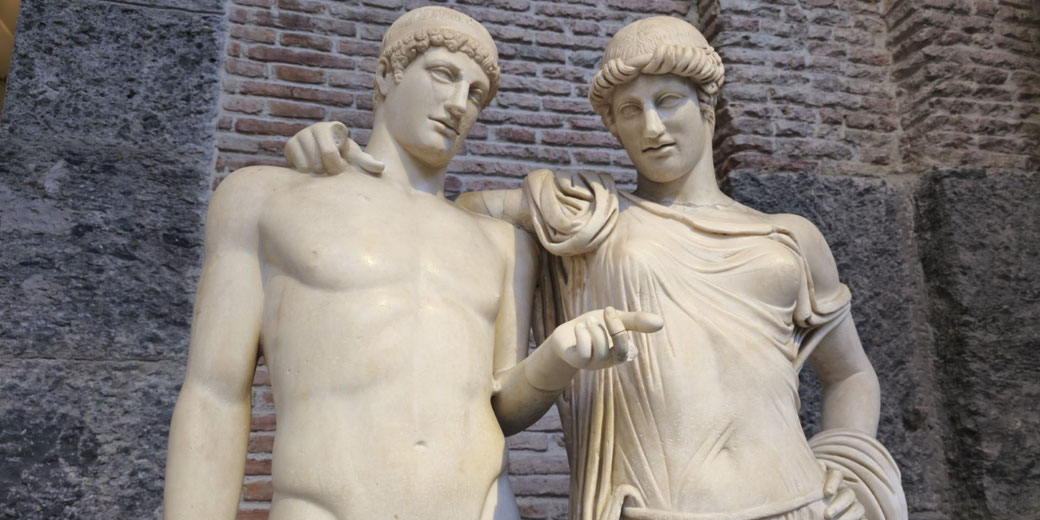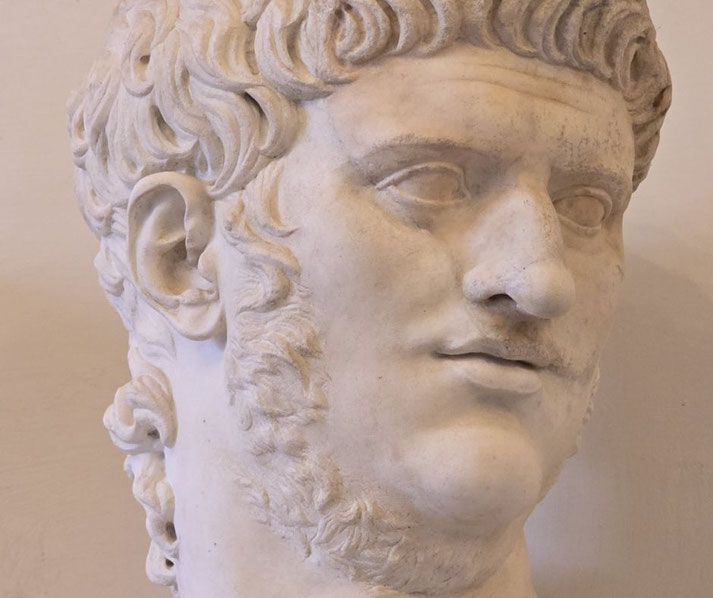Nero's constant attempts to murder his own mother ... and the spectacular ways they failed

Emperor Nero’s relationship with his mother, Agrippina the Younger, ended in repeated attempts on her life that exposed the ruthlessness of imperial rule.
Plots ranged from secret poisonings to a pleasure boat built to sink, and each failure showed conflict within the court.
These unsettling attempts helps explain how private grudges became a public crisis in ancient Rome, but also how they ultimately weakened Nero’s own authority over the empire.
Nero's rise to power and Agrippina's role in it
When Agrippina married her uncle, Emperor Claudius, in AD 49, she brought her imperial heritage and a desire to restore her family’s place in Roman politics.
She worked through the power structures of the imperial court and secured the adoption of her son, Lucius Domitius Ahenobarbus, who took the name Nero Claudius Caesar and became heir to the empire.
She had ensured his elevation above Claudius’ natural son Britannicus, and had prepared him for power with a carefully managed public image.
Prior to this marriage, Agrippina had been exiled under Caligula and was the widow of Gnaeus Domitius Ahenobarbus, Nero's father.
To maintain control, Agrippina appointed the Stoic philosopher Seneca as Nero’s tutor and arranged his early appearances before the Senate.
She issued edicts in his name, controlled palace decisions, and appeared alongside him on imperial coinage, a notable and relatively rare act for Roman women, which strengthened her position as co-ruler.
Her prominence as Augusta surpassed traditional gender limits and placed her at the centre of government.
Then, in AD 54, Claudius died after consuming mushrooms widely believed at the time to have been poisoned by Agrippina’s agents.
Ancient sources such as Tacitus and Suetonius claimed that when the initial poison failed, Claudius' physician Xenophon, ensured his death by slipping a poisoned feather into Claudius' throat.
Regardelss, Nero had become emperor at the age of sixteen. However, once crowned, Nero began to realise that he no longer needed his mother’s guidance and that her authority had become a threat to his independence.

Why did Nero turn against his mother?
At first, Nero tolerated Agrippina’s control out of gratitude and inexperience, but as he grew older and more confident, he pushed back against her interference since he viewed her presence at state meetings and her influence over his advisors as a barrier to ruling independently.
Burrus, the commander of the Praetorian Guard, and Seneca, who had once served her interests, changed their support to Nero and encouraged him to reduce her role.
Eventually, she responded by drawing attention to Britannicus, suggesting that he had a stronger claim to the throne as Claudius’ biological son.
However, Nero acted quickly to counter the threat. During a banquet in AD 55, according to ancient sources, he arranged for Britannicus, who was then thirteen years old, to be seved a poisoned drink in front of the guests.
The poison had been carefully prepared to delay its effects so as not to raise immediate suspicion, but Britannicus collapsed mid-drink anway.
The act removed any doubt about who held power and delivered a clear warning to Agrippina.
Soon after, she began publically attacking Nero’s personal decisions. She objected to his growing independence and accused him of weakening the dignity of the imperial household.
Her open disapproval angered him. Later Roman authors also claimed that Poppaea Sabina urged Nero to take permanent action against Agrippina, but this account creates timing problems, as Poppaea did not become his mistress until after Agrippina’s death in AD 59.
Nevertheless, Nero ultimately accepted the argument that his mother continued to be a political danger and that his rule would never be secure while she lived.

The first attempt on Agrippina's life
By early AD 59, Nero had ordered the construction of a pleasure boat that had bobby traps installed.
Then, he invited Agrippina to a festival at Baiae and arranged for her return journey to take place at night.
The ship featured a trap mechanism, a collapsible floor and a weakened hull, all intended to cause her death at sea under the appearance of an 'accident'.
The vessel had been specially built by Anicetus, who was commander of the fleet at Misenum and had once been loyal to her.
After the banquet, Agrippina boarded the vessel, accompanied by her friend Acerronia Polla.
The floor collapsed as planned, but she survived the fall. Acerronia screamed Agrippina’s name to attract help and was beaten to death by sailors who, according to some accounts, mistook her for the empress.
Some accounts suggest that Agrippina escaped, rather than swimming, when she clung to wreckage and reached the shore.
Either way, despite sustaining injuries, Agrippina managed to cross the cold waters of the Bay of Naples and reached the shore near her villa at Misenum, and, with the help of local fishermen, she found her way home.
Ancient sources claim she then sent a message to Nero describing the incident as a tragic mishap.
The nature of that message continues to be uncertain, but it may have been an attempt to buy time and assess his intentions.
The second and third attempts to kill her
After the failure at sea, Nero stopped the theatrics. Some sources claim he attempted to poison her again, but Agrippina had grown cautious and took usual antidotes.
Next, he allegedly ordered the ceiling in her bedroom to be set up a device designed to collapse while she slept.
This attempt also failed, either from poor workmanship or a sudden change in her sleeping habits.
At that point, Nero’s patience ended, so he called Anicetus, the same commander of the fleet stationed at Misenum.
The emperor instructed him to carry out the murder directly and without further delay.
That night, Anicetus and a small group of men entered Agrippina’s villa and forced their way into her room.
According to later accounts, she exposed her body and instructed them to stab her in the womb.
They killed her with multiple knife wounds, left her body in the chamber, but they avoided any public explanation until they could manage the political consequences.
When all else fails...
Soon after the assassination, Nero issued a statement accusing Agrippina of plotting to overthrow him.
He claimed that she had conspired with Anicetus to murder the emperor and install herself as ruler.
Seneca and Burrus, who managed the response, told the story to the Senate and convinced officials to accept the claim as true.
As a result, her funeral took place in secret and he received no formal honours, while her body was buried hastily on the villa grounds.
Nero had removed a rival, but he had also cut the final connection to the Julio-Claudian family that had protected his claim to the throne.
Reports began to circulate that Nero wandered the palace at night, said he saw visions of his mother.
Suetonius later wrote that Nero sought out magicians and priests to dispel her ghost.
Ancient writers claimed that Nero confessed privately that he had destroyed the only person who had ever truly cared for him.
They presented him as tormented by guilt, and he apprently feared that her spirit would punish him since he believed he could not escape what he had done.
How did the murder impact Nero's reign?
After Agrippina’s death, Nero lost the small amount of self-control he had left. He pushed Seneca and Burrus aside and elevated men who encouraged his excess.
His attention turned to theatrical performances and chariot racing to entertain himself, while he personally presented public spectacles, which he used to win popular support.
In the meantime, he neglected the business of government.
As public discontent spread, a number of political conspiracies emerged against Nero.
Ultimately, the murder of his mother became a symbol of the emperor’s cruelty and open disregard for traditional Roman values.
Romans viewed parricide with horror; under Roman law, those guilty of killing a parent could be sewn into a sack with animals and cast into the Tiber.
While Nero faced no such punishment, his actions shocked even those who had once supported him.
In AD 65, the Pisonian Conspiracy nearly ended his reign when Gaius Calpurnius Piso, along with several senators, equestrians, and even former allies, plotted his removal.
Once the plot was discovered and neutralised, Seneca was forced to commit suicide after being accused of participating in it.
However, by AD 68, the Senate had turned against the emperor, and provincial armies declared loyalty to Galba.
In response, Nero fled to a villa outside Rome, where he ended his life before his captors arrived.
His final words, according to Suetonius, mourned the death of an artist: “Qualis artifex pereo!”
What do you need help with?
Download ready-to-use digital learning resources
Copyright © History Skills 2014-2025.
Contact via email
With the exception of links to external sites, some historical sources and extracts from specific publications, all content on this website is copyrighted by History Skills. This content may not be copied, republished or redistributed without written permission from the website creator. Please use the Contact page to obtain relevant permission.





